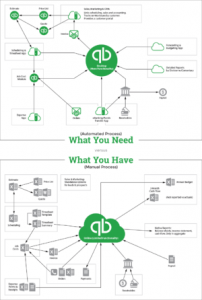Discounts cut into your gross margin, and you’ll have to get a lot more sales to make up for it. (There’s a bit of math in this post, but all of it just illustrates the previous sentence.)
This is the first of two posts about discounts. This one tells you not to offer them; the next one advises you to take them with both hands. There’s a bit more to it than that, though – please read on.
Let’s say you’re selling a $16 widget for a list price of $20; that’s a 25% markup ($4/$16), or a 20% gross margin ($4/$20). A customer who normally buys 100 units from you ($2,000 sales, $400 margin for you) wants a 10% price discount ($1,800 sales, $200 margin). Should you do it?
If you give it to them, you’ll have given up $200 in margin. That doesn’t sound too bad, right?
No prizes for working out that it was a trick question.
A better question is “How many more units at the discounted price would you have to sell to clear $200 in margin?” Here, the answer sounds a lot worse:
(Another) 100 units: ($200 margin/ ($18 – $16) = 100 units).
Profit Breakthrough:
Before giving discounts, have a clear grip on your margins. If you must give a discount to make the sale, make sure it passes the cost-benefit test.
Try to negotiate increased volumes as part of the deal – perhaps by becoming a preferred supplier, meaning you can focus on service, not price.
Price increases work in a similar fashion, but in reverse, and in your favour: if another customer comes along and is willing to pay 10% more ($22 each, or a margin of $6, not $4) for the same 100 units ($2,200 at the same cost of $1,600), your margin has gone up from $400 to $600. The $200 extra profit would have required selling 50 more units at the list margin of $4.
Another way to look at the price increase: staying still at $400 total profit means you’d only have to sell 67 units: 67 * (22-16)], not 100 units.
The math is Foregone Total Margin in Dollars / Foregone Unit Margin in Dollars, or $200/ $3 = 67 units. Alternatively:
Units * [ (Original Margin %) / (Original Margin % – Discount %) -1 ]100 * 25% / (25% – 10%) – 1
100 * (25%/15% – 1)
100 * (1.67-1) = 67.
Profit Breakthrough:
The damage done by any price discount (or the benefit to any price increase) is much greater where your margins are lower.
Profit Breakthrough:
Talk to your salespeople. Point out that giving the 10% discount means they’ll have to double their sales to stand still. Point out instead that a 10% price over list means that they can sell 33% fewer units and be no worse off.
Profit Breakthrough:
Tie your sales commissions to your margins. We’ll discuss this more in an upcoming post.
We recognize that you may need to bid aggressively to win some business. If that happens repeatedly, you’re offering a commodity: you’re competing on price, not service. Investing in your systems will help you compete on service, not price – and should raise your margins at the same time.
Morals of the Story:
- Don’t give discounts unless you really need to.
- Always have a handle on your margins to assess the damage if discounts are on the table.
- Always consider how you can raise your unit prices.
We welcome your Comments! Please also feel free to Contact us, either via email or using our website.

